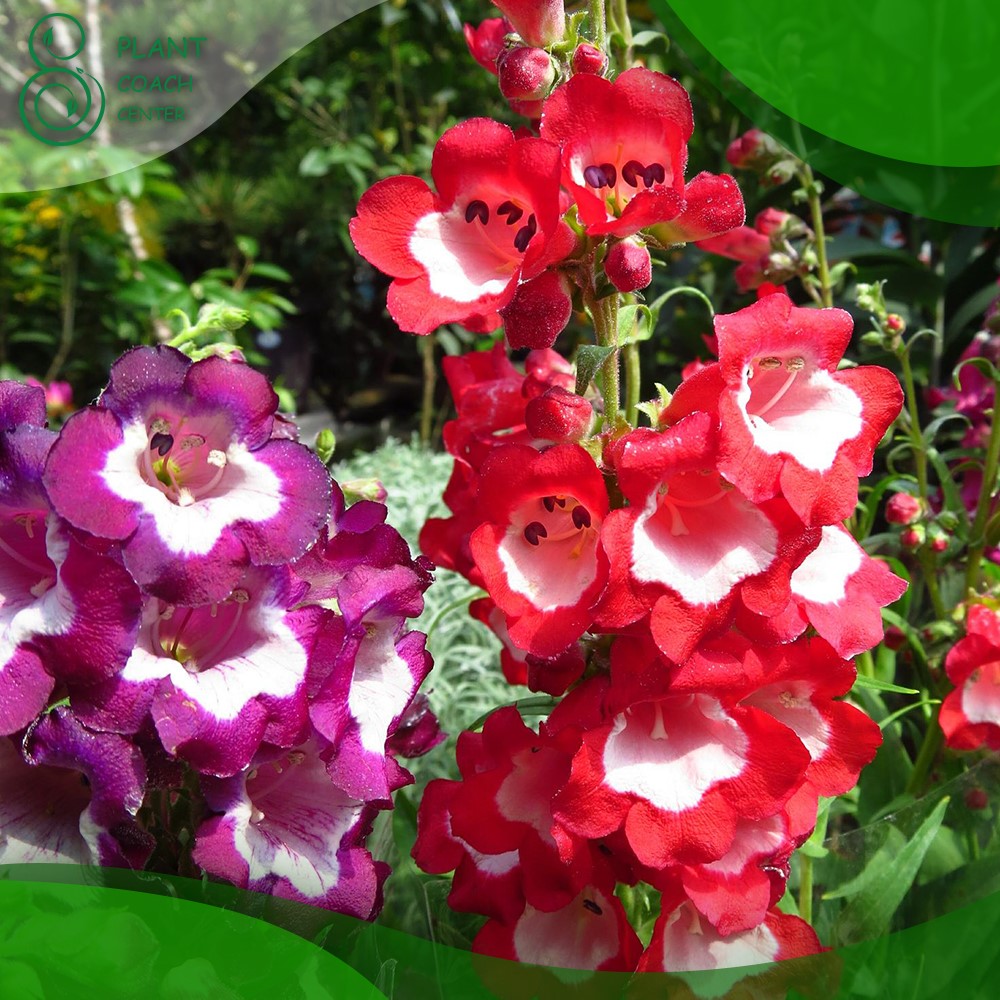When to Cut Back Penstemon
With its vibrant blooms and graceful appearance, Penstemon is a beloved addition to many gardens. Proper care and maintenance are essential for any plant’s health and longevity. Pruning, in particular, is crucial in ensuring penstemon plants’ optimal growth and vitality.
This comprehensive guide will explore the art of pruning penstemon, discussing the best timing, techniques, common problems associated with this process, and additional care practices to keep your penstemon thriving.
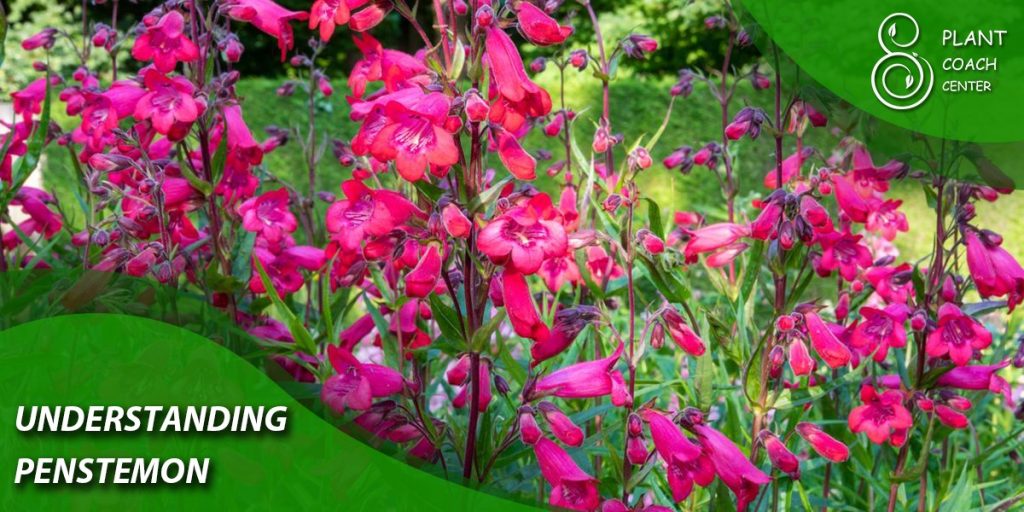
Understanding Penstemon
Penstemon, also known as beardtongue, is a diverse genus comprising numerous species and cultivars. These herbaceous perennials are characterized by their tubular flowers, which vary in color from vibrant reds and pinks to delicate purples and whites. Penstemon plants exhibit various growth habits, ranging from compact mounds to tall spikes, making them suitable for a wide range of garden styles.
The Benefits of Pruning Penstemon
Promoting Healthy Growth
Pruning penstemon encourages the development of solid and vigorous stems, allowing for increased nutrient absorption and overall plant health. Removing dead or damaged branches improves the plant’s ability to allocate resources effectively.
Enhancing Flowering and Bloom Time
Strategic pruning can extend the blooming period of penstemon by removing spent flowers and encouraging the growth of new buds. Deadheading faded blooms redirect the plant’s energy towards new flower production, resulting in a prolonged and more abundant display.
Maintaining Plant Shape and Appearance
Regular pruning helps Penstemon maintain an attractive form, preventing legginess and promoting a more compact, bushier habit. By selectively removing overcrowded or crossing branches, you enhance the plant’s overall structure and ensure a visually pleasing garden display.
Preventing Diseases and Pests
Pruning allows for better airflow and light penetration, reducing the risk of fungal diseases and discouraging pest infestations. Thinning out dense growth and removing diseased or infested plant material helps create an unfavorable environment for pathogens and pests, enhancing the plant’s resilience.
Identifying Signs for Pruning
Obvious Indications for Pruning Penstemon
- Overgrown or straggly appearance: If your penstemon looks leggy or unkempt, it may benefit from a pruning session to restore its shape and vigor.
- Dead or damaged stems and foliage: Prune away any diseased, broken, or dead branches to prevent the spread of diseases and improve overall plant health.
- Crowded growth or excessive density: If your penstemon appears overcrowded or lacks sufficient airflow, thinning branches can help alleviate the issue.
Recognizing Specific Growth Patterns
- Long stems with limited branching: Penstemon plants with long, unbranched stems may require pruning to encourage lateral growth and a fuller appearance.
- Sparse or no flowering: If your penstemon is not producing abundant blooms, pruning can stimulate new growth and subsequent flowering.
- Signs of disease, such as discoloration or wilting: Prune affected parts to prevent the spread of disease and promote the plant’s recovery.
Assessing Overall Plant Health
- Vigor and vitality of the plant: If your penstemon appears weak or lacks vigor, pruning can help redirect energy and promote new growth.
- General appearance and leaf color: Unhealthy or discolored foliage may indicate underlying issues that can be addressed through pruning and appropriate care.
- Pest or disease infestations: Pruning infected areas and removing pest-infested plant material can help manage and control pests and diseases effectively.
Factors to Consider Before Pruning
- Time of Year:
Pruning penstemon at the right time is crucial. Early spring, after the last frost, is generally the most suitable period for significant pruning, as it allows the plant to recover and put forth new growth. However, specific species and cultivars may have different requirements, so it’s essential to research and understand the specific needs of your penstemon variety.
- Climate and Hardiness Zones:
Consider the climate and hardiness zone where your penstemon is grown, as this can affect the optimal pruning timing. In colder regions, it might be necessary to delay pruning until the risk of frost has passed.
- Growth Stage and Flowering Period:
Prune penstemon immediately after the flowering period or during dormancy to ensure minimal disruption to the blooming cycle. This allows the plant to redirect energy toward root development and prepare for the next blooming season.
- Personal Preferences and Garden Design:
Take into account your desired garden aesthetic, as well as how the penstemon plant interacts with other elements in the landscape, when deciding on pruning methods. Frequent and selective pruning may be necessary if you prefer a more compact and tidy appearance.
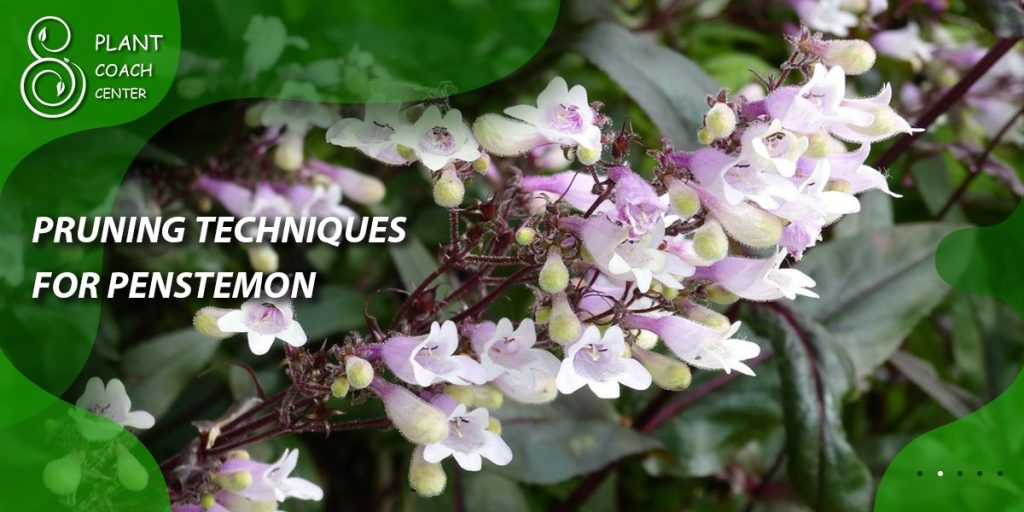
Pruning Techniques for Penstemon
Before delving into specific techniques, gathering the necessary tools and equipment for the task is essential. These may include a pair of sharp bypass pruners, clean pruning shears, gloves for protection, and disinfectant to sterilize your tools between cuts.
General Pruning Guidelines
- Begin by removing dead or damaged stems, returning them to healthy growth. Make clean, angled cuts just above a leaf node or lateral bud to promote new growth and prevent dieback.
- Maintain a balanced shape by selectively removing any overcrowded or crossing branches. This improves airflow and prevents congestion.
- Encourage branching and compactness by making clean cuts just above a leaf node or lateral bud. This stimulates the growth of lateral shoots and promotes bushier growth.
Specific Pruning Techniques for Penstemon
– Pinching: Gently pinch off the tips of young shoots to stimulate branching and promote fuller growth. This technique is especially effective for compact varieties that tend to become leggy.
– Cutting Back: For larger penstemon varieties, cutting the entire plant by one-third to half its height after flowering can rejuvenate the plant and encourage a second bloom. Cut just above a leaf node or lateral bud to promote new growth.
Seasonal Pruning Guide for Penstemon
Early Spring Pruning
- Remove any frost-damaged or dead stems, cutting them back to healthy growth.
- Cut back the plant by about one-third to half its height, encouraging new growth from the base.
- Pruning at this time promotes the development of robust stems and prepares the plant for the upcoming growing season.
Summer Pruning
- Deadhead spent flowers regularly to promote continuous blooming. Snip off the faded blooms just below the flower head to prevent the plant from expending energy on seed production.
- Pinch back leggy stems to encourage branching and prevent top-heaviness. By removing the tips of elongated shoots, you redirect the plant’s energy toward lateral growth.
Fall/Winter Pruning
- Trim back any remaining foliage to prevent disease and pest harborage. However, avoid severe pruning during this time, as it can make the plant more susceptible to winter damage.
- Apply a layer of organic mulch around the base of the plant to protect it during the winter months. This helps insulate the roots and prevent extreme temperature fluctuations.
Addressing Common Penstemon Problems
Overgrown or Leggy Penstemon
- To encourage bushier growth, cut the entire plant back by one-third to half its height after flowering.
- Pinch back new growth regularly to promote branching and discourage legginess.
- Consider staking taller varieties to prevent them from becoming top-heavy and prone to bending or breaking.
Non-Flowering Penstemon
- Assess the plant’s growing conditions, ensuring it receives adequate sunlight and soil fertility. Penstemon generally thrives in full sun or partial shade.
- Check for nutrient deficiencies and adjust fertilization accordingly. A balanced slow-release fertilizer in early spring can provide the nutrients for optimal blooming.
- Prune after the flowering period to encourage new buds and promote blooming in the next season. Cutting back spent flowers redirects the plant’s energy toward new growth and bud formation.
Disease and Pest Control Measures
- Practice good garden hygiene by removing diseased or infested plant material promptly. Dispose of it away from the garden to prevent further contamination.
- Monitor for common pests like aphids, spider mites, and slugs, and take appropriate measures such as organic pest control methods or introducing beneficial insects.
- Avoid overwatering, as excessive moisture can lead to fungal diseases. Provide adequate spacing between plants to improve air circulation and reduce humidity around the foliage.
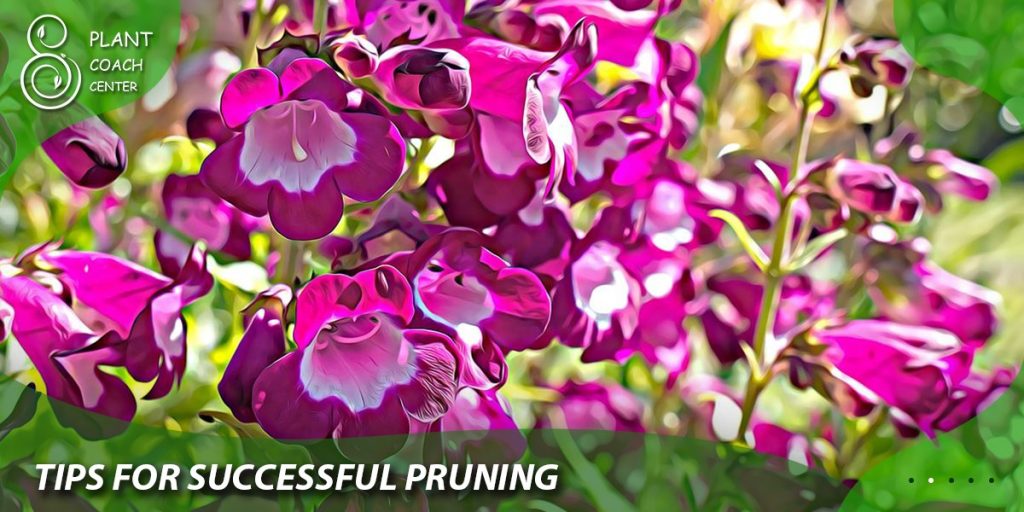
Tips for Successful Pruning
Proper Timing and Frequency
- Follow the recommended timing for pruning penstemon to maximize its benefits and minimize stress on the plant. Prune at the appropriate season based on your specific penstemon variety.
- Avoid excessive pruning, as it can weaken the plant and reduce blooming. Moderate pruning to remove dead or diseased branches and shape the plant is generally sufficient.
Pruning Dos and Don’ts
- Use clean, sharp tools to make precise cuts and minimize damage to the plant. Disinfect your tools by pruning different plants to prevent the spread of diseases.
- Don’t prune penstemon during extreme weather conditions, as it can impact its recovery. Aim to prune when the weather is mild and the plant is not stressed.
Disinfection and Hygiene Practices
- Disinfect your pruning tools by wiping them with a cloth soaked in rubbing alcohol or a solution of 10% bleach and 90% water. This helps prevent the transmission of diseases from one plant to another.
- Dispose of pruned plant material properly to avoid contamination and pests. Bag or compost the material, ensuring it is disposed of away from the garden area.
Additional Care Practices for Penstemon
Soil Requirements and Fertilization
- Plant penstemon in well-draining soil enriched with organic matter. Ensure the soil pH is suitable for the specific Penstemon variety.
- Fertilize moderately with a balanced slow-release fertilizer, following the manufacturer’s instructions. Apply fertilizer in early spring to boost the growing season’s nutrients.
Watering and Irrigation Tips
- Water penstemon profoundly but infrequently, allowing the soil to dry slightly between watering sessions. Overwatering can lead to root rot and other moisture-related issues.
- Avoid wetting the foliage when watering, as this can promote fungal diseases—water at the base of the plant to ensure efficient water uptake by the roots.
Sunlight and Exposure Considerations
- Provide Penstemon with full sun or partial shade, depending on the species and cultivar. Most penstemon varieties thrive in areas with at least six hours of direct sunlight daily.
- Ensure the plant receives adequate air circulation to prevent fungal diseases. Avoid planting penstemon in areas with dense foliage or near structures that may impede airflow.
Case Studies and Expert Advice
Real-life examples of penstemon pruning and care practices and insights from experienced horticulturists and gardeners can provide valuable guidance and inspiration. Let’s explore a few case studies and expert advice to enhance your understanding of penstemon care:
Case Study 1: Penstemon ‘Husker Red’
- Penstemon ‘Husker Red’ is known for its deep maroon foliage and delicate pink flowers.
- Pruning: After the first flowering flush, reduce the plant by about one-third of its height to encourage compact growth and a potential second bloom.
- Expert Advice: Horticulturist Sarah Reynolds recommends mulching around ‘Husker Red’ during winter to protect the crown from freezing temperatures.
Case Study 2: Penstemon digitalis ‘Husker Red’
- Penstemon digitalis ‘Husker Red’ is a tall penstemon variety with white tubular flowers and maroon foliage.
- Pruning: Remove any frost-damaged or dead stems in early spring, cutting them back to healthy growth. Avoid cutting into the woody base of the plant.
- Expert Advice: Gardener John Thompson suggests leaving the seed heads intact after flowering to provide winter interest and food for birds.
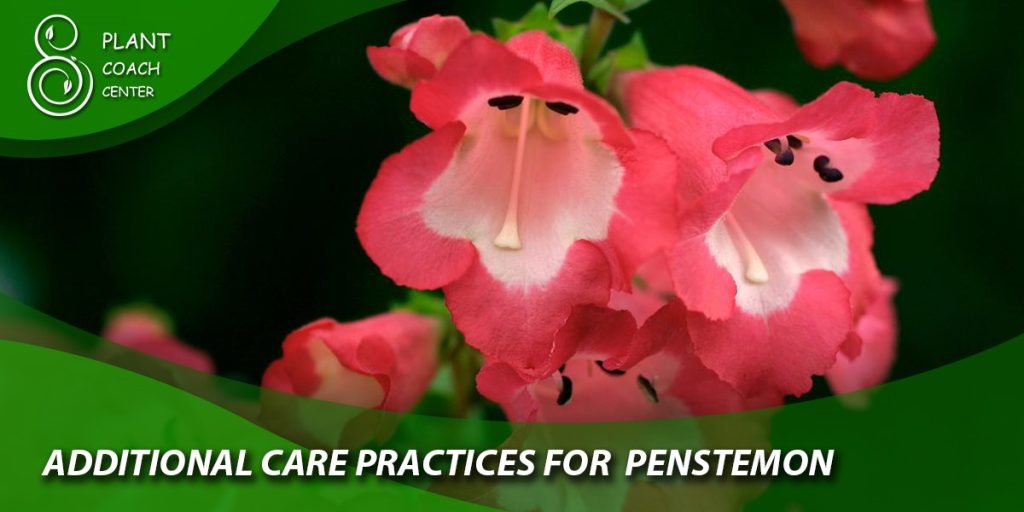
Conclusion
Pruning penstemon is an essential aspect of plant care that promotes healthy growth, enhances flowering, and maintains the plant’s overall appearance. By understanding the signs for pruning, considering the relevant factors, and applying appropriate techniques, gardeners can cultivate thriving penstemon plants that become stunning focal points in their landscapes.
Additionally, incorporating additional care practices such as proper soil fertility, watering, and sunlight requirements can further ensure the long-term success of your penstemon garden. Remember to enjoy the process and adapt your approach to suit the specific needs of your penstemon varieties.
With this comprehensive guide, you are well-equipped to embark on a successful penstemon pruning and plant care journey, creating a vibrant and flourishing garden for years to come.
When is the best time to prune Penstemon?
Early spring after the last frost or after the flowering period.
How much should I prune my penstemon?
Cut back by one-third to half its height for rejuvenation and compactness.
Can I prune penstemon in winter?
Trim back foliage, but avoid severe pruning to prevent winter damage.


